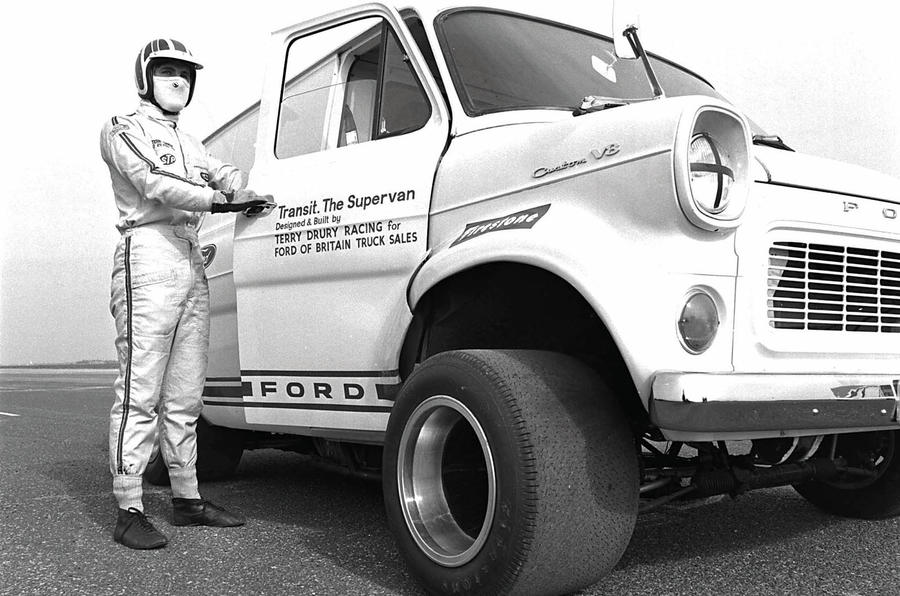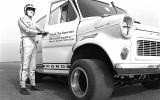By the early 1970s, more than 400,000 Ford Transits were already on the roads.
Boreham’s early road vans were known for their surprisingly lively handling and performance, particularly when the 2.0-litre engine was installed. That got Ford pondering how far a Transit could be stretched in this power game.
To find out, Ford’s Truck Sales Promotion team charged Terry Drury Racing of Rainham, Essex, to give the Transit a very special upgrade.
Named ‘Supervan’, this steroidal Transit was based on a standard Mk1 shell. The floorpan was cut open to make room for a bigger engine. How big? Well, a racing-spec Ford V8 was a natural fit for such a project, and the reworked unit was expanded to 4999cc and said to provide in the region of 435bhp.
The wheel housings were extended to accommodate 15in-wide wheels shod with Firestone racing tyres and the brakes were from a CanAm racing car.
A tubular spaceframe was bolted to the van’s side members at six points. The spaceframe carried the running gear – much of it, like the steering, derivedfrom Ford’s GT40 – and the powertrain.
Autocar’s David Thomas, who was charged with testing Supervan at Boreham Proving Ground, described the cabin as “surprisingly civilised”. A Corbeau racing seat replaced the standard item and the steering wheel was of the type used in the Escort Twin Cam.
Before embarking on his own test laps, Thomas sat alongside racing driver Terry Croker and produced a set of performance figures for Supervan.
“Despite assurances that the engine is safe to over 8000rpm, we chose 7000rpm as our limit,” wrote Thomas. “This gave 68mph in first, 102mph in second and (given enough room) 134mph in third.
"Theoretical speeds of 165mph in fourth and 196mph in fifth are purely academic. Using only two gears, Supervan can accelerate to 60mph in 7.0sec and cover a standing quarter mile in 14.9sec.”
Even more impressive was its behaviour on the circuit, reckoned Thomas: “To watch Terry Croker sweeping through Railway Corner with a front wheel pawing the air is a most awesome experience.
“When my turn came, the butterflies were fluttering… In less than a lap I was feeling quite at home. There is a lot of understeer, especially when using plenty of power on the faster bends. Easing off helps to reduce this, but pressing on even harder is sometimes equally effective.








Join the debate
Add your comment
Crazy how the current
original Supervan
It just looks right - pawing the air with those huge 15 inch wheels....wasn't it a GT40 spec engine and box?
Of course the performance figures don't look so outlandish now but this was over 40 years ago when an MGB took 8 seconds to reach 50 mph!
It must have been a handful in a breeze with that 'nose up attitude', but in a period when Gt. Britain wasn't so 'great', it was a lot of fun to watch, and showed the great tradition of a small British company (Terry Dury's), creating something spectacular and showcasing engineering skills.
Terrible shame it didn't survive as a museum exhibit....Ford may have been bringing it out at GFoS events for example today, or will it be suddenly found in an Essex barn somewhere?